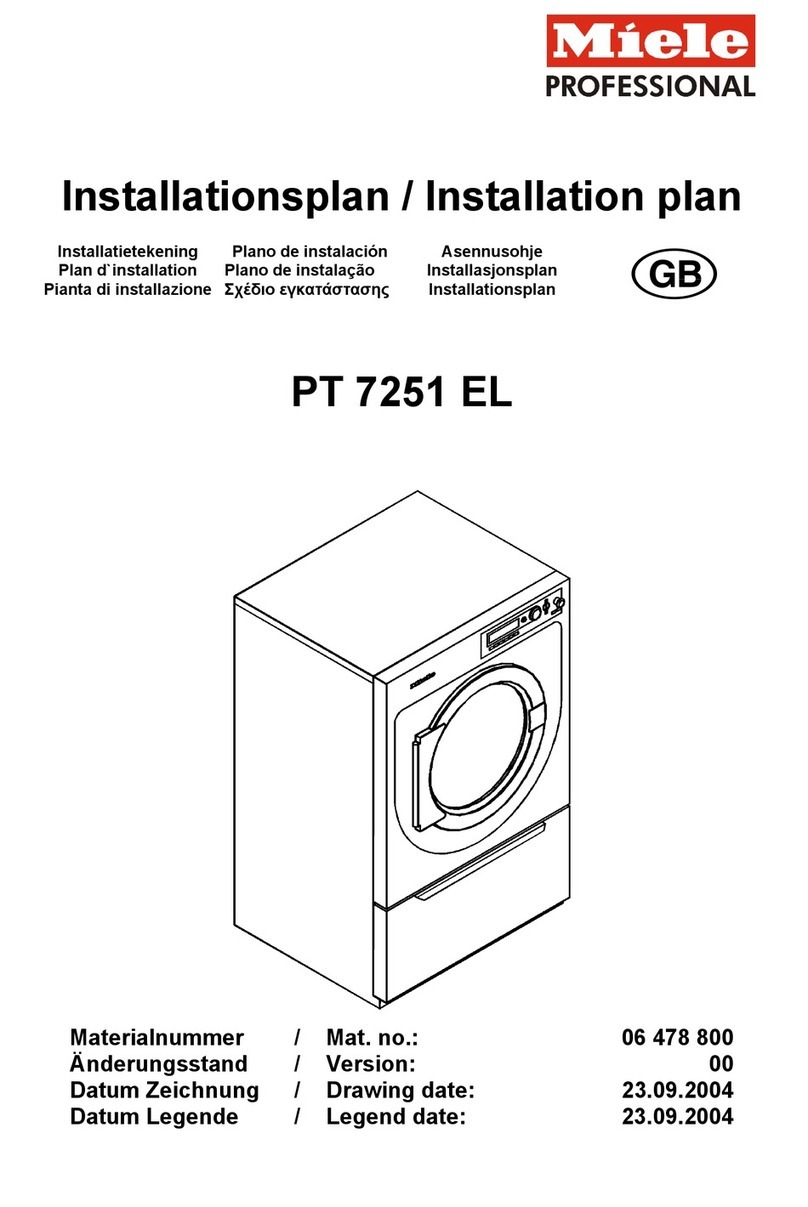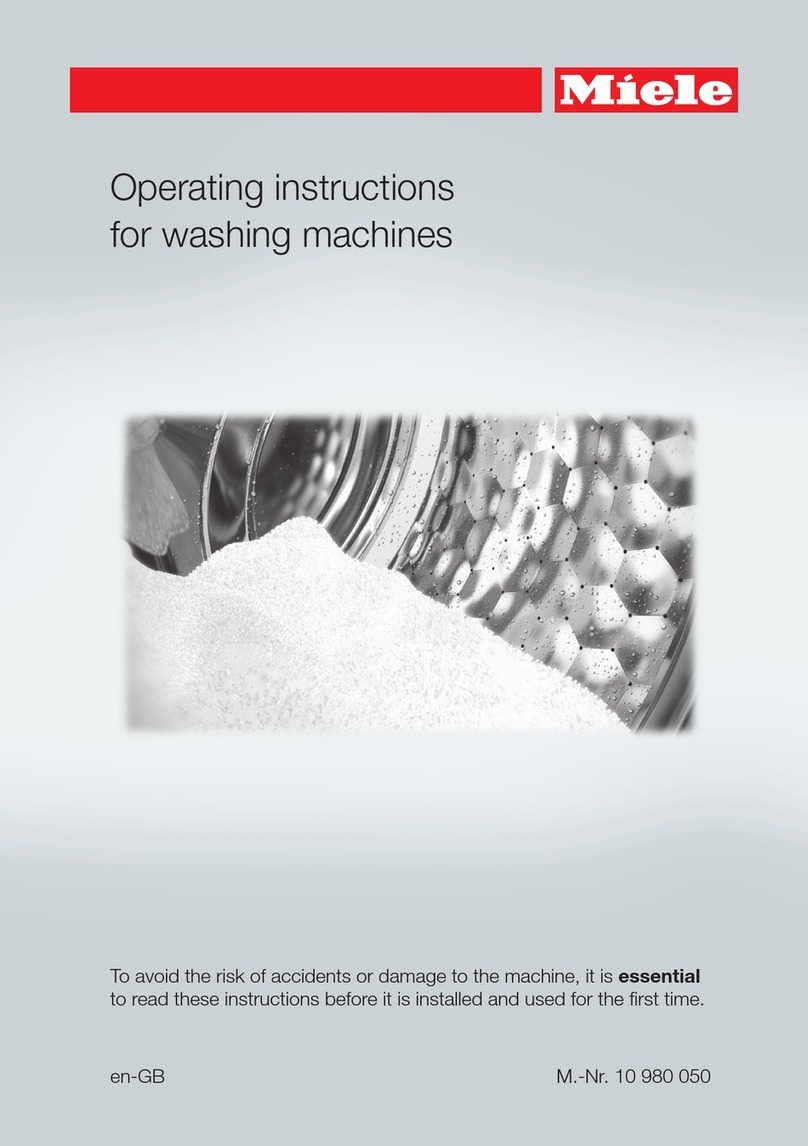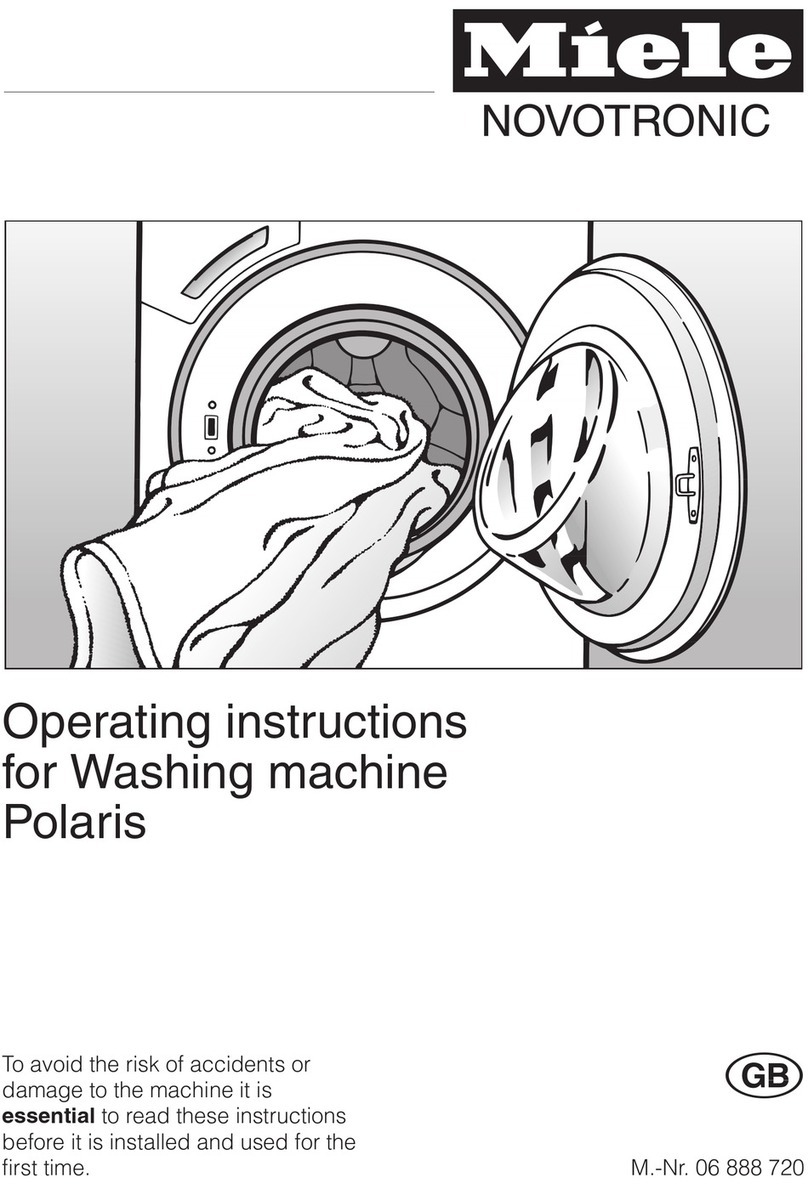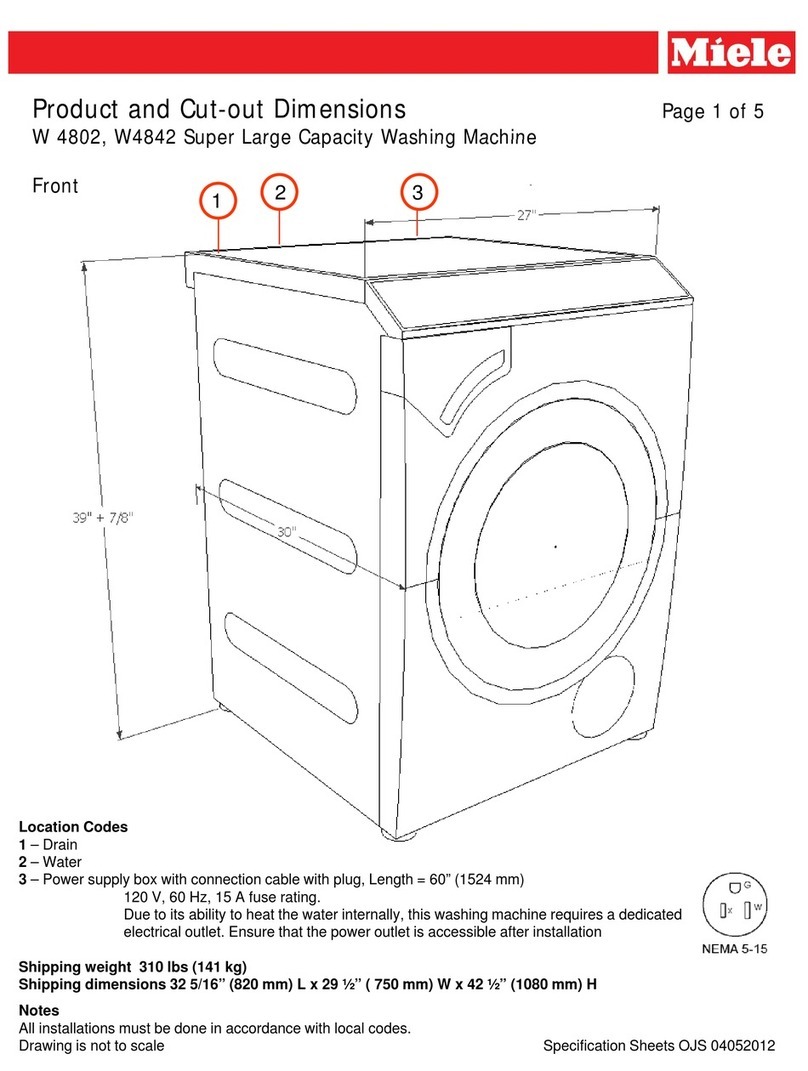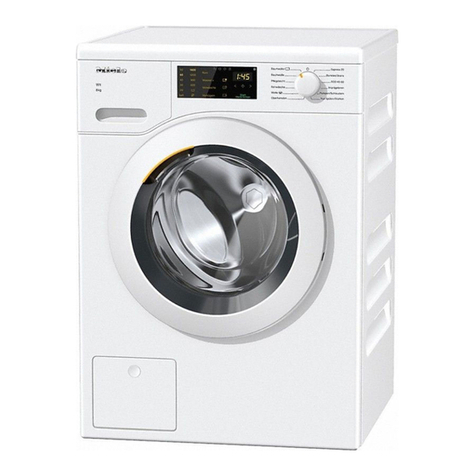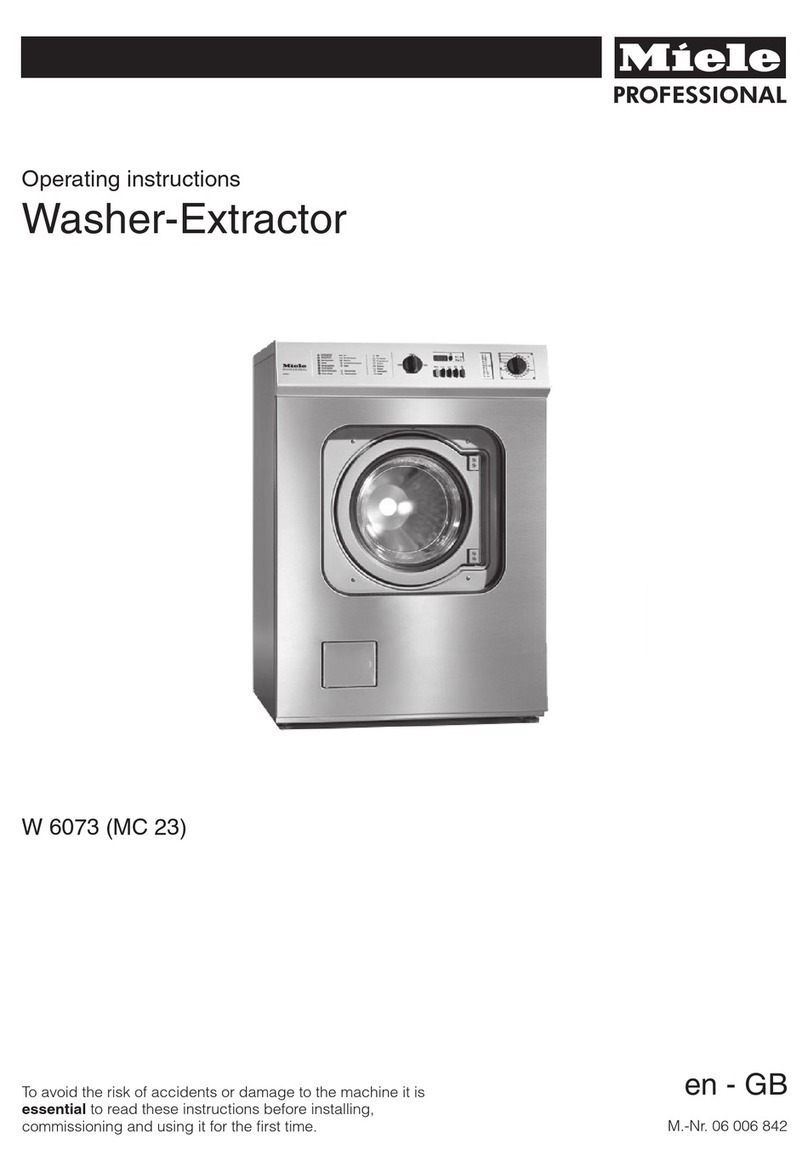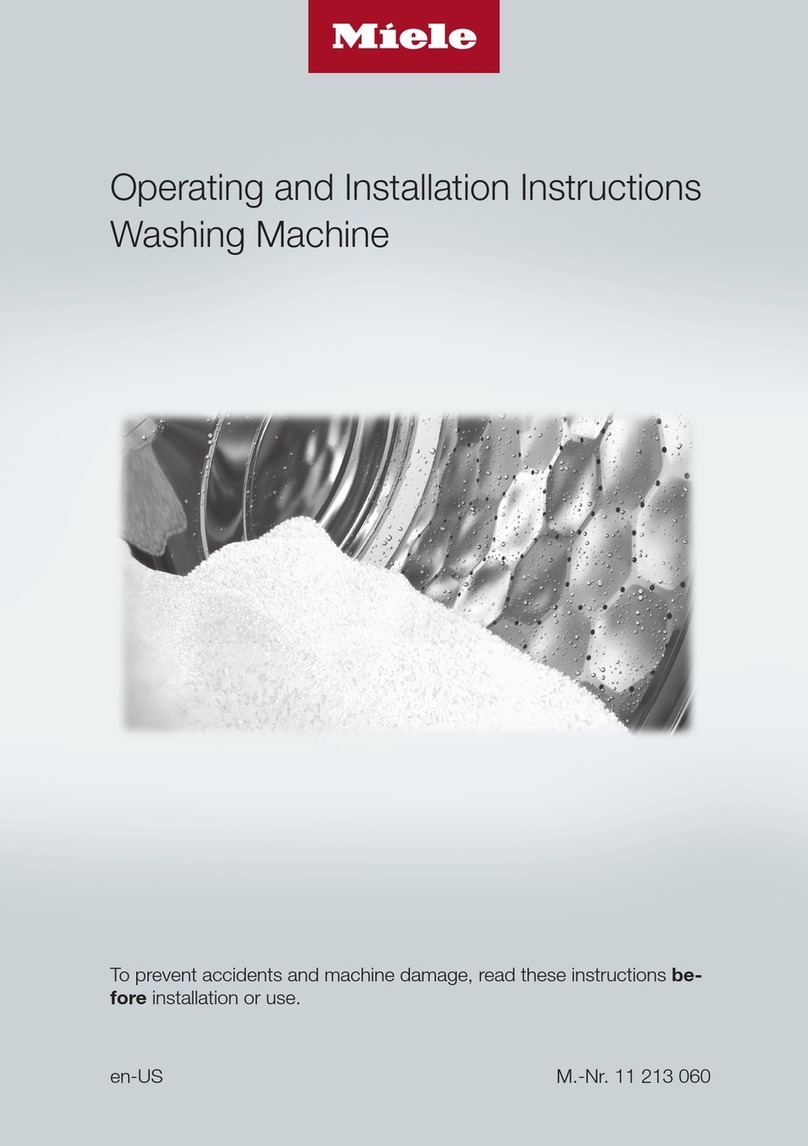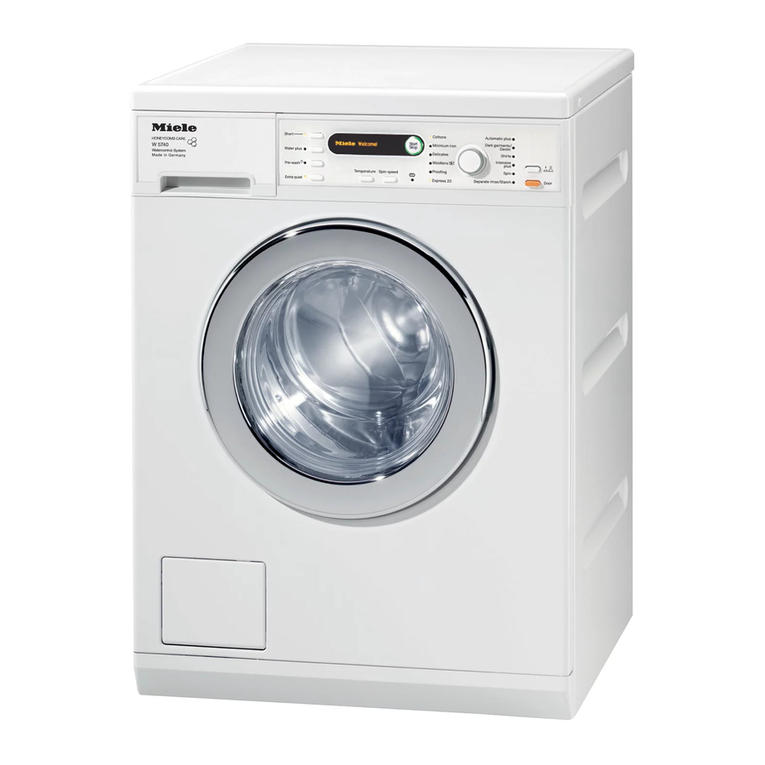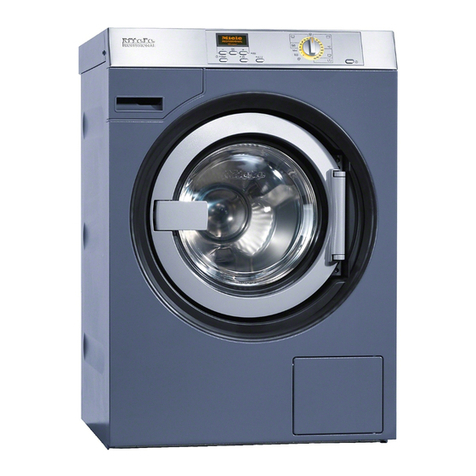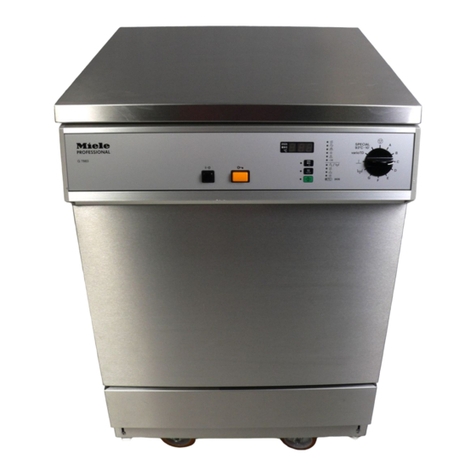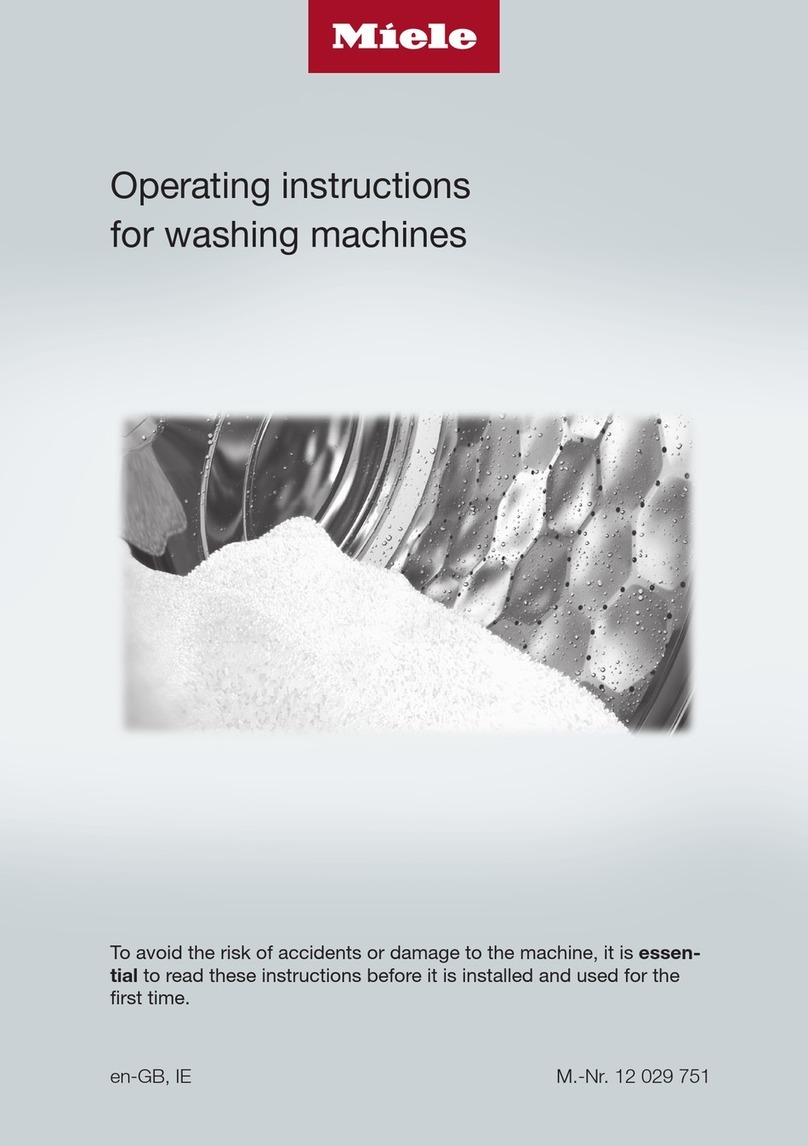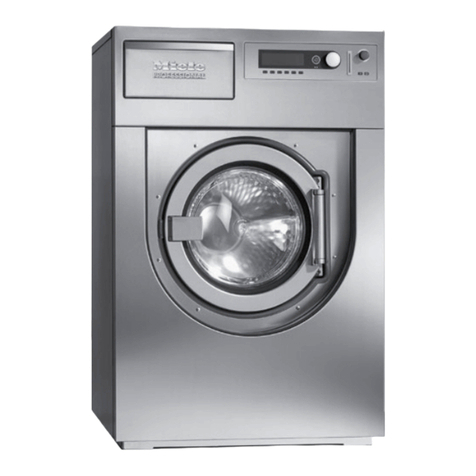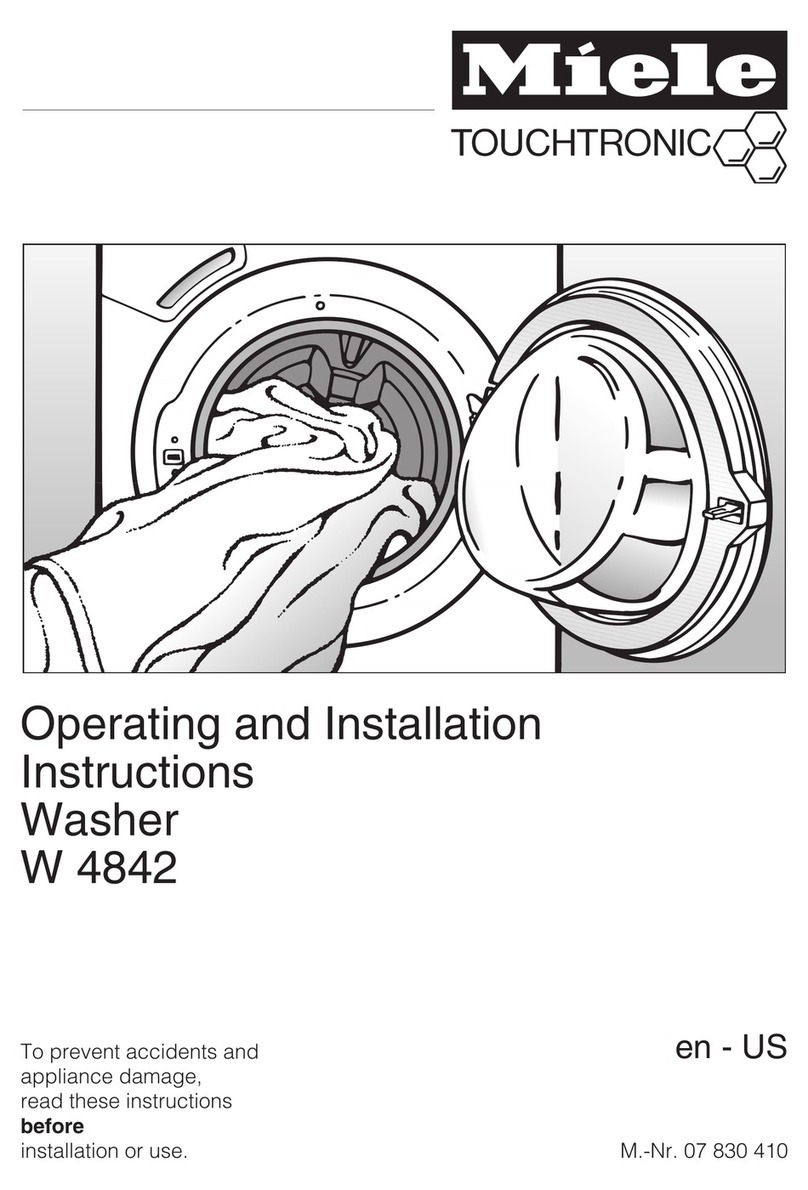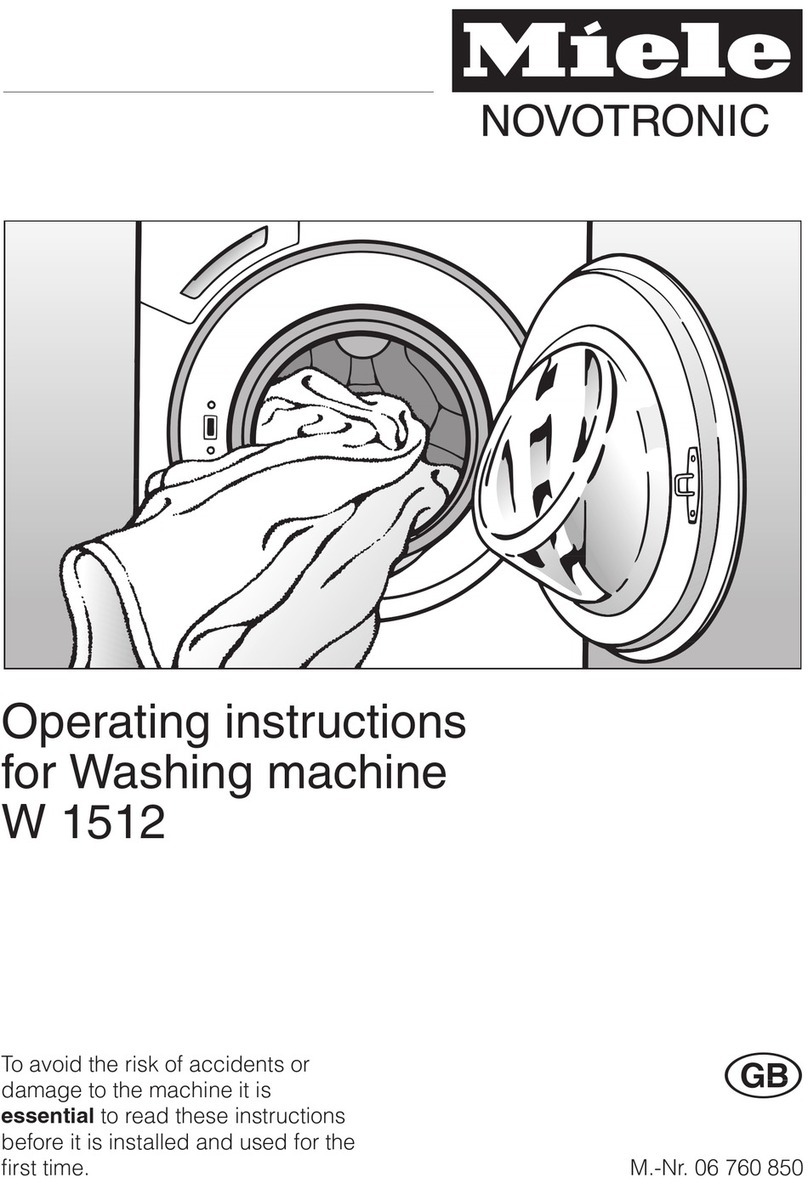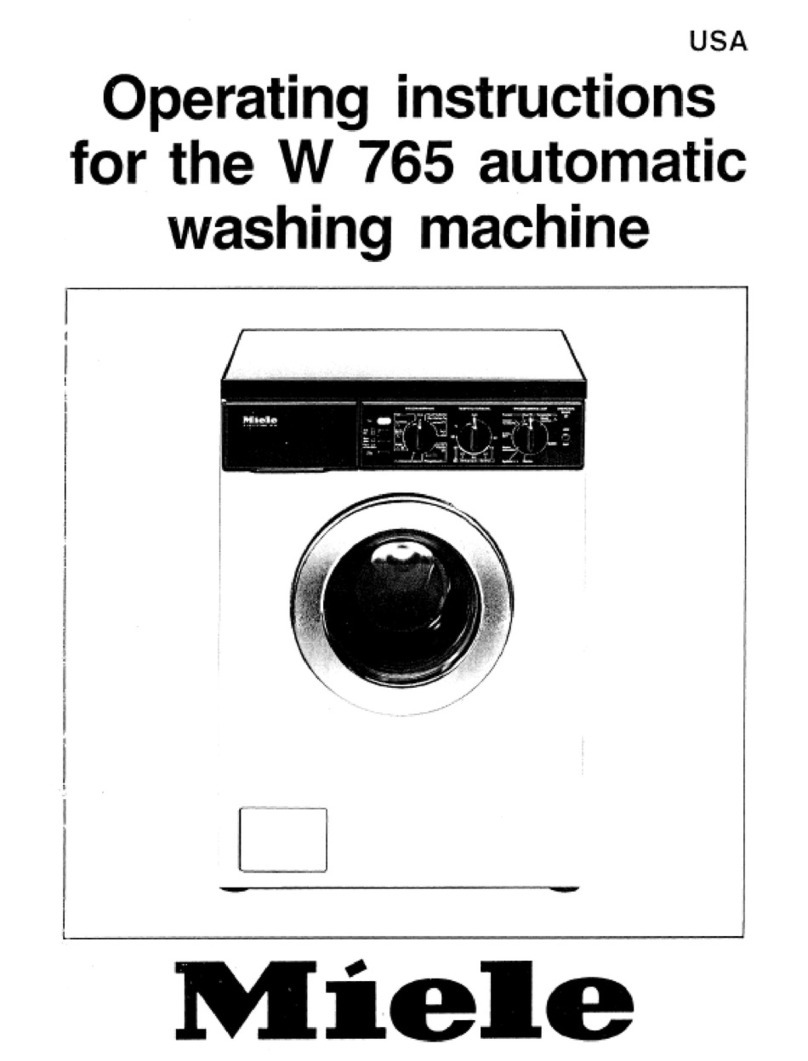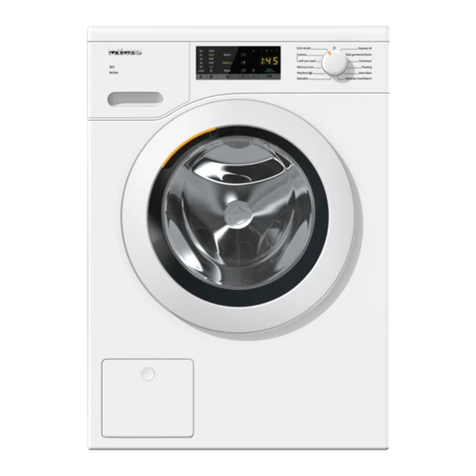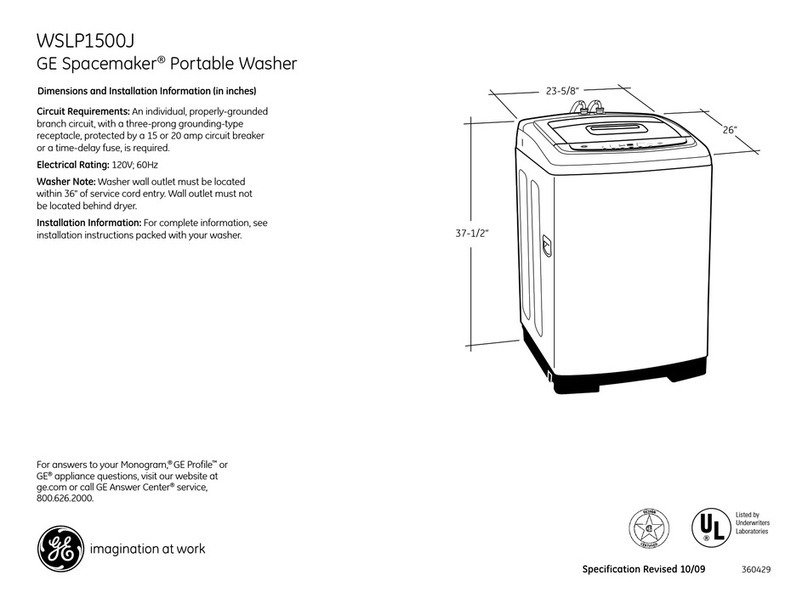WARNING - PERSONAL INJURY
HAZARD: Do not allow small chil-
dren or unauthorized personnel access
to the washer/disinfector or its controls.
WARNING - EXPLOSION
HAZARD: Do not install the
washer/disinfector in areas where flam-
mable compounds/vapors are
present.
WARNING - PERSONAL INJURY/
EQUIPMENT DAMAGE HAZARD:
Repair work must be carried out only by
a qualified and competent service tech-
nician. Repairs by unqualified persons
or installation of unauthorized parts
could cause personal injury, result in
costly equipment damage or void the
washer/disinfector warranty.
WARNING - BURN HAZARD:
Except for emergency, do not open
door when cycle is in process. In an
emergency, first stop the cycle by
pressing ON/OFF button. Press DRAIN
touch pad and wait for
washer/disinfector to drain. Wear pro-
tective gloves and face shield when-
ever reaching into wash cabinet.
WARNING - ELECTRICAL SHOCK
HAZARD: Disconnect all utilities to
equipment before servicing. Do not ser-
vice equipment unless all utilities have
been properly locked out.
WARNING - PERSONAL INJURY
HAZARD: The water in this
washer/disinfector is not suitable for
drinking.
WARNING - PERSONAL INJURY/
EQUIPMENT DAMAGE HAZARD:
Only use detergents which have been
approved of by Miele. Use of any other
products may cause personal injury, in-
validate the disinfection results or void
the washer/disinfector warranty.
WARNING - CHEMICAL BURN
HAZARD: Wear protective gloves
and goggles and use care when han-
dling liquids such as detergents or neu-
tralizing agents. Read and follow the in-
structions and safety procedures on the
packaging and in the Material Safety
Data Sheet (MSDS).
WARNING - PERSONAL INJURY/
EQUIPMENT DAMAGE HAZARD:
Empty containers and glassware before
placing in the washer/disinfector. Do
not allow any acids or solvents, espe-
cially hydrochloric acid and chlorides,
to get into the wash cabinet.
WARNING - PERSONAL INJURY
HAZARD: Be careful when sorting
instruments with sharp pointed ends. If
possible, place the pointed end down-
wards.
WARNINGS AND SAFETY INSTRUCTIONS
9

